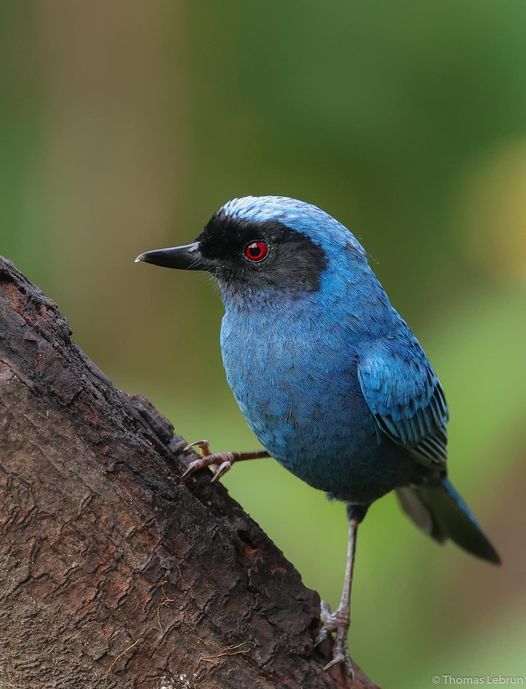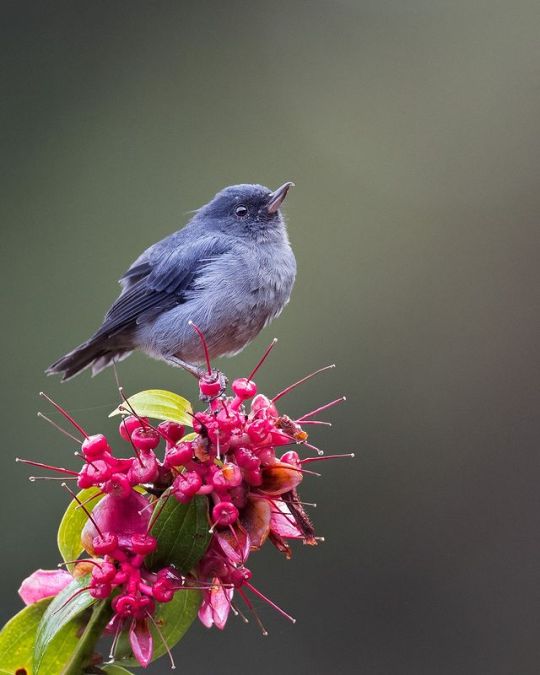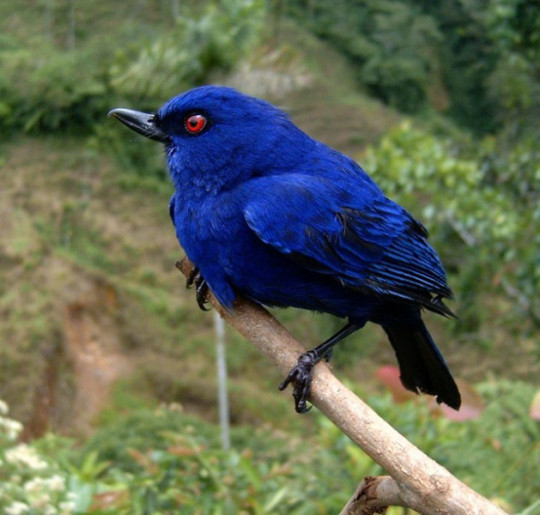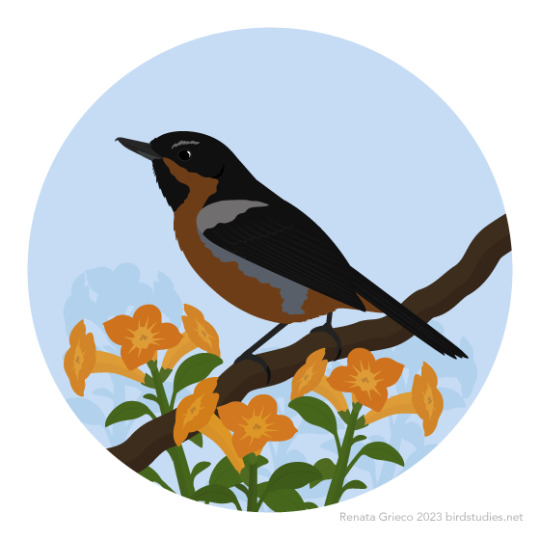#diglossa
Text

Masked Flowerpiercer (Diglossa cyanea), family Thraupidae, order Passeriformes, Pichincha, Ecuador
photograph by Thomas Lebrun
542 notes
·
View notes
Text

[2225/11080] Chestnut-bellied flowerpiercer - Diglossa gloriosissima
Order: Passeriformes
Suborder: Passeri
Superfamily: Emberizoidea
Family: Thraupidae (tanagers)
Genus: Diglossa (flowerpiercers)
Photo credit: John Cahill via Macaulay Library
#birds#Chestnut-bellied flowerpiercer#Passeriformes#Passeri#Emberizoidea#Thraupidae#Diglossa#birds a to z#undescribed
127 notes
·
View notes
Photo


Slaty Flowerpiercer
143 notes
·
View notes
Text

January 11, 2024 - Bluish Flowerpiercer (Diglossa caerulescens)
Found in the Andes in parts of Venezuela, Colombia, Ecuador, Peru, and Bolivia, these flowerpiercers live in and around mountain forests. Foraging alone or in pairs and often joining mixed-species flocks, they eat insects, small berries, and nectar. Though they sometimes pierce the bases of flowers to access nectar, like closely related species, they do this less often than many other flowerpiercers. Possibly breeding between June and February, they build open cup-shaped nests from dry grass and moss in bushes and mossy banks.
#bluish flowerpiercer#flowerpiercer#tanager#diglossa caerulescens#bird#birds#illustration#art#tropical#birblr art
125 notes
·
View notes
Text
BOTD: Cinnamon-bellied Flowerpiercer

Photo: Aaron Maizlish
"Small, active, warblerlike bird of highlands. Found in flower banks, forest edges, and overgrown brushy fields with flowers, mainly within pine-oak and evergreen forests. Also visits towns and gardens with flowering shrubbery. Flits amid flowers, piercing the bases with its 'can-opener' bill."
- eBird
#birds#cinnamon bellied flowerpiercer#birds of north america#north american birds#flowerpiercers#tanagers#passerines#birds of mexico#birds of the caribbean#birding#birdblr#birblr#bird watching#bird of the day#Diglossa baritula
49 notes
·
View notes
Photo

Rusty Flowerpiercer (Diglossa sittoides)
© Richard Jeffers
94 notes
·
View notes
Photo

A new variant has been added!
Indigo Flowerpiercer (Diglossa indigotica)
© Edwin Múnera Chavarría
It hatches from blue, dark, distinctive, poor, red, small, typical, and western eggs.
squawkoverflow - the ultimate bird collecting game
🥚 hatch ❤️ collect 🤝 connect
12 notes
·
View notes
Photo

Slaty Flowerpiercer (Diglossa plumbea)
Flowerpiercers are considered a parasitic bird. They have evolved beaks that pierce the base of flowers to drink nectar without helping pollinate the plant. You can see scars on the base of the flowers where it has been pierced before. This Slaty Flowerpiercer was photographed at Savegre Mountain Lodge in Costa Rica.
21 notes
·
View notes
Video
Masked Flowepiercer por Fernando Andrade Sánchez
Por Flickr:
Diglossa cyanea Picaflor de Antifaz Bogotá - Colombia
3 notes
·
View notes
Photo

Diglossa baritula by Amado Demesa
#bird#birds#animal#animals#biology#nature#wildlife#fauna#Passeriformes#Thraupidae#Diglossa#Diglossa baritula
28 notes
·
View notes
Text
Me lo dijo un enmascarado.
No, No tengo Conjuntivitis, este color en mis ojos es Natural y me ayuda a diferenciar mis alimentos entre el verde de las ramas que frecuento, aumentando el contraste de otros colores, mas o menos como cuando tu le pones Filtro Rojo a tu cámara.

Diglossa cyanea. Pinchaflor Enmascarado / Masked Flowerpiercer.
View On WordPress
0 notes
Photo

Female slaty flowerpiecer near sunset by bepenwilfrid
3 notes
·
View notes
Text

[2458/11080] Cinnamon-bellied flowerpiercer - Diglossa baritula
Order: Passeriformes
Suborder: Passeri
Superfamily: Emberizoidea
Family: Thraupidae (tanagers)
Genus: Diglossa (flowerpiercers)
Photo credit: Esteban Matías via Macaulay Library
#birds#Cinnamon-bellied flowerpiercer#Passeriformes#Passeri#Emberizoidea#Thraupidae#Diglossa#birds a to z#undescribed
92 notes
·
View notes
Text

VERY ORIGINAL DIORAMA circa 1900 /1920 bringing together exotic and Paleartic Avian specimens including:
1 Toucan ariel (Ramphastos vitellinus )1 Ruby-topaz hummingbird (Chrysolampis osquitus ) 2 Colibris (Lepidopyga spp ) 2 Blue Dacnis (Dacnis cayana) 1 Brazilian Tangara (Ramphocelus bresilius ) 1 Hooded blackbird ( Chrysomus icterocephalus ) 1 Masked pearl (Diglossa cyanea ) 1 Cotinga pompadour ( Xipholena punicea ) 1 Tijé manakin ( Chiroxiphia pareola ) 1 Red-headed manakin ( Pipra rubrocapilla ) 1 Emerald Tangara ( Chlorophanes spiza ) 1 Fox crete Tangara (Tachyphonus surinamus) 1 Teat Organist (Euphonia violacea) 1 Scarlet Guepier Ploceus sp. ) 1 Grey partridge and its chicks ( Perdix perdix ) 1 Ermine ( Mustela erminea )
Artcurial
5 notes
·
View notes
Text

July 14, 2023 - Black-throated Flowerpiercer (Diglossa brunneiventris)
Found in two separate ranges, one in Peru and northern Bolivia and another in northern Colombia, these flowerpiercers live in scrubby habitats, including the edges of forests. Foraging alone, in pairs or family groups and sometimes in mixed-species flocks, they eat nectar and insects, often piercing the bases of flowers to access nectar. They build open cup-shaped nests from grass stems, moss, and lichen in vegetation near the ground where females lay clutches of two eggs.
#black-throated flowerpiercer#flowerpiercer#diglossa brunneiventris#bird#birds#illustration#art#grassland#birblr art
72 notes
·
View notes
Photo

Photo of the Day - The Golden-eyed Flowerpiercer (Diglossa glauca) is also commonly referred to as Deep-blue Flowerpiercer. From its appearance, both seem entirely appropriate. This is the only flowerpiercer that has a yellow eye. This combined with its wholly blue plumage make it almost instantly identifiable.
This great photo was taken by Adam Riley in Ecuador
#RockjumperBirding#birds#birding#birdwatching#nature#wildlife#birdphotography#naturephotography#flowerpiercer
160 notes
·
View notes
